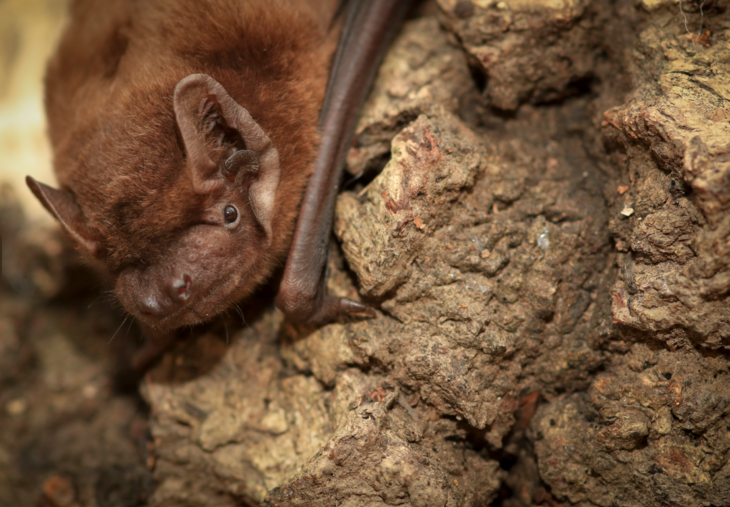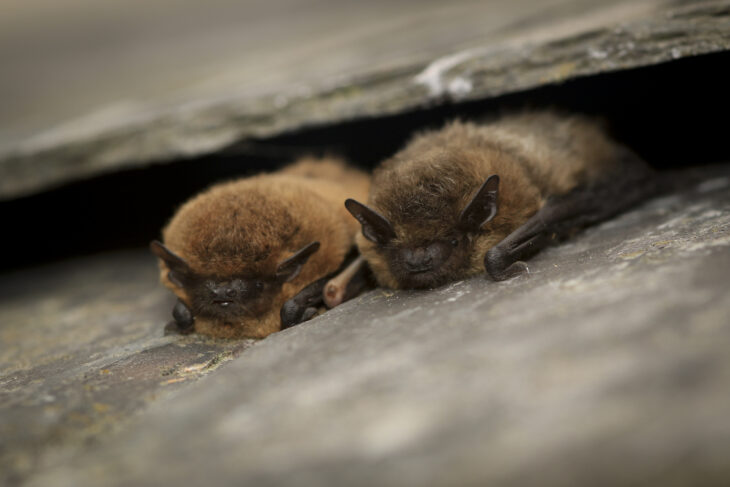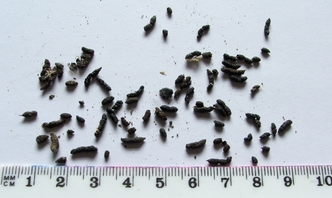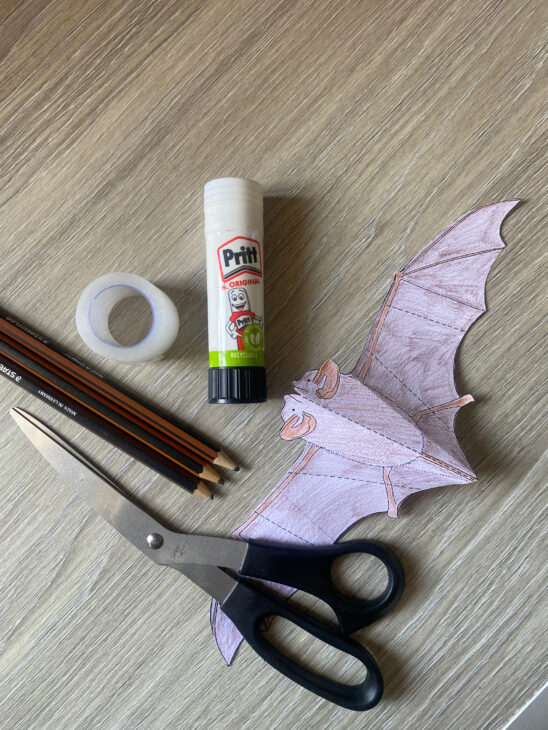Woodlands can provide places for bats to dine, roost (their home), and travel – with trees acting as highways for them! Nine species of bat call Scotland home, each protected by law (including their feeding and roosting habitats).
Bats are nocturnal mammals, so you’re unlikely to see them during the day, but as you walk through woodlands you may pass a tree hollow that is harbouring a colony!
You can find out more about Scottish bats through our take a closer look at bats YouTube video
The noctule bat is our largest (but can still fit in the palm of your hand!) and nosiest bat we find in Scotland. They roost in trees and can be seen flying over the canopy in search of insect-prey.

The common pipistrelle is our smallest and most common species found in Northern Scotland – which means it’s one of the hardiest! It can fit inside a matchbox and weighs the same as a 20p coin! Find out more about the common pipistrelle here

Bats leave droppings where they roost, so they can often be found stuck to walls or on the ground under holes or trees. They have a rough appearance and are filled with chewed-up bits of insect – keep your eyes peeled for any if you’re out for a woodland walk!

Get crafty and find out how to make either a flying bat or a roosting bat below!
What you will need:
- Printed activity sheet
- Scissors
- Colouring pens/pencils
- Glue
- String
- Sticky tape
How to make your bat(s):
- Start by colouring in the bat with pens/pencils.
- Using scissors, carefully cut the bat out (you may need to help young children here as it can be fiddly)
- Crease the paper bat along folds 1 and 2. Glue the two halve of the body together.
- Your group have two options for their bat – they can make a flying bat or a roosting bat. For a flying bat, do not fold the wings. For a roosting bat, fold wings as indicated.
- Cut some string (to the length you want) and attach to the bat with some sticky tape – this is for hanging your bat. For a flying bat, hang from top of back. For a roosting bat, hang from the ‘tail’. The bats can be hung singly, or several can be brought together to make a mobile.

Share your bat creations with us using #DiscoverLearnPlay
